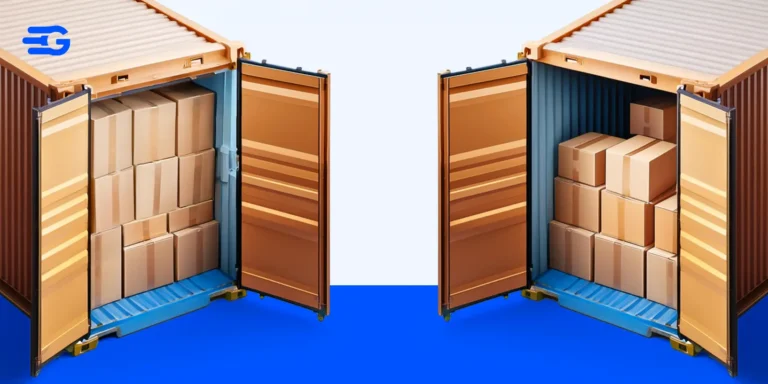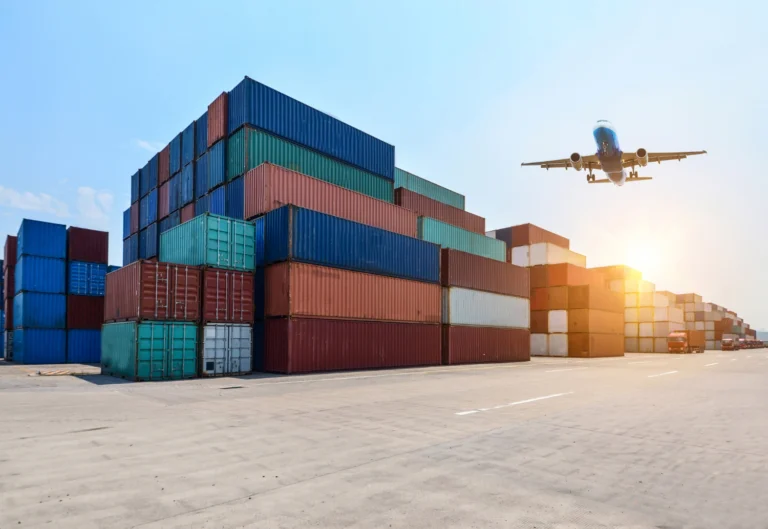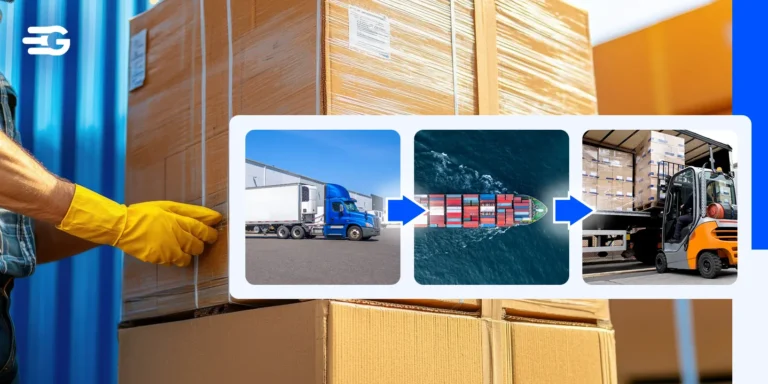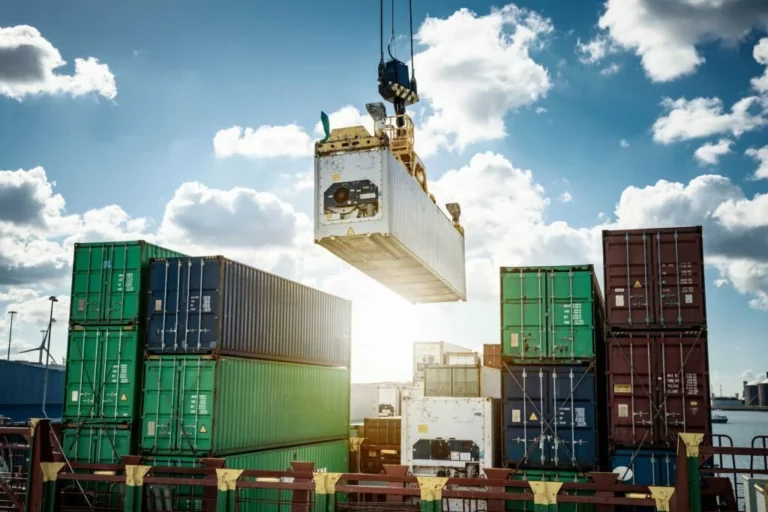Unravelling the Timeline: How Long Does International Shipping Take for Businesses?
When it comes to business-to-business transactions, especially when it comes to international shipping, promptness and efficiency are critical. In contrast to regular domestic delivery, overseas shipments require navigating through a complex network of ports, customs procedures, and uncertainties such as weather. Comprehending the duration of overseas shipment is essential for companies trying to keep their supply chains running smoothly and their customers happy.
In 2023, a substantial 1.8 billion metric tons of goods were transported across international waters, highlighting the growing importance of overseeing this complex transportation environment. It can be difficult for companies who deal internationally to determine how long shipments will take. But even in the seeming chaos, there is a structure, an intricate structure that needs to be figured out.
The purpose of this blog is to answer the question of how long does international shipping take, exposing the fundamental processes that move cargo from point of origin to point of destination. We will discuss regional variances, examine various shipping options, and provide you with the information you need to accurately predict and maximise international delivery times.
How long does international shipping take in B2B
Precisely predicting international shipping times is essential for keeping supply chains running smoothly in the world of international business-to-business transactions. Reaching this goal guarantees cost savings, efficient operations, and happy clients. Nonetheless, comprehending the diverse elements influencing delivery durations might occasionally resemble resolving an intricate riddle. Stay with us and the following information will arm you with the information you need to meet this issue head-on.
The Role of Geographical Distance and Routing
Forget simply following a straight line on the map – reaching your destination efficiently isn’t always about covering the shortest distance. For example, consider two packages bound for the same destination country. While one takes a direct route over calm seas, the other navigates through congested land routes. Although distance is important, routing optimization is the key. A skilled logistics partner can determine the most efficient route by analysing variables like port congestion, weather, and distance, which will eventually shorten delivery times. It’s about going beyond the surface-level mapping, and carefully analysing variables to expedite delivery. For instance, if you plan on shipping to busiest ports in the world which is prone to be congested, we’ll need to redirect the route to a less crowded one to avoid delays. Similarly, weather disruptions will require to be monitored with real-time data on currents and storms to ensure smooth sailing, or consider traffic patterns and road conditions to find the quickest path in case of land transportation.
Impact of Mode of Transportation on Delivery Times
Air freight is the fastest alternative, although it costs more, when time is of the essence. Ocean freight is a slower but less expensive option for shipments that are more cost-effective; it is especially appropriate for large or less urgent cargo. Furthermore, multimodal transportation that combines air and sea freight options can balance cost and speed. It’s critical to recognise the trade-offs and balance the urgency with the related expenses. The courier services chosen could also potentially impact your international shipping times. And hence understanding tools like DHL tracking for international shipments plays a key role in you international shipping time.
Understanding Customs and Regulatory Delays
Clearing customs can be a major obstacle when exporting internationally. Delays that are not anticipated can arise from negotiating import/export regulations and going through inspections. For the clearance procedure to go well make sure to ensure the following pointers:
- Since the value of your item will be needed to calculate duties and taxes, please indicate the exact value even if it is being given away for free.
- When shipping multiple parts, keep them all together and label each of them separately.
- Fill out the required paperwork precisely and routinely.
- On customs paperwork, list every commodity individually and include thorough descriptions that include the materials and intended use.
- For every item, the nation of origin or manufacture should be printed clearly.
- If relevant, provide your broker’s full contact details.
- Make sure the phone numbers or fax details for the sender and the consignee are included.
Analysing Average Shipping Times for Key International Routes
The attacks in 2023 by Yemen’s Houthi group on commercial ships in the southern Red Sea have thrown another wrench into the already delicate gear of international shipping. As a result, several shipping companies are opting to bypass the crucial waterway altogether, seeking safer routes that avoid the region. Therefore, understanding average shipping times for key B2B routes is more crucial than ever, allowing businesses to navigate this intricate landscape with predictability and efficiency.
From Asia to North America: A Case Study
This massive trade route transports everything from auto components to cell phones, and the variety of its cargo is reflected in the delivery times. When it comes to speed, air freight is unmatched, carrying cargo from East Asia to the West Coast in just 3-5 days (port-to-port) and the East Coast in 5-7 days (door-to-door). Sea freight is a dependable option for enterprises on a tight budget; depending on the origin, destination, and route selected, shipments can arrive in 15–25 days (port-to-port) or 19–47 days (door-to-door).
Remember that speedier links between East Asia and the US East Coast are now possible thanks to the recent development of the Panama Canal, which has drastically changed transit times for several routes.
Europe to Africa: Transit Time Considerations
A wide range of transportation possibilities are presented by the large and diversified continent of Africa. Air freight delivers quickly, taking 2-4 days (door-to-door) to reach African metropolises like Johannesburg or Lagos from major European airports. Sea freight is more variable; trips from Northern Europe to West Africa typically take 20–30 days (port–to–port), but trips to East African destinations may take up to 50 days (door–to–door). These estimations can be strongly affected by port infrastructure and regional considerations such as political stability. Comprehending these subtleties is essential for precise planning.
Intercontinental Shipments: A Comparative Analysis
East Asia to Europe: Here, ocean freight reigns supreme, with average transit times of 30-45 days (port-to-port) between major ports. Express sea options can shave off 10-15 days but come at a premium. Air freight remains a viable, albeit expensive, option for urgent shipments, delivering within 7-10 days (door-to-door).
North America to South America: Similar to Europe-Africa, sea freight forms the backbone, with journeys from the Eastern US to major South American ports taking 15-25 days (port-to-port), while West Coast shipments can add 5-10 days. Air freight offers a 3-5 day (door-to-door) option for critical deliveries.
Europe to North America: This route is similar to Asia-Europe but with slightly different transit times due to distance and port infrastructure. For example, sea freight typically takes 15-25 days (port-to-port) from major European ports to the East Coast of North America, while West Coast deliveries can add 5-10 days. Air freight can deliver within 5-7 days (door-to-door).
Advanced Planning for B2B International Shipping
Easy and effective international shipping is now a need in the hectic world of business-to-business trade. However, negotiating the complex web of ports, customs, and erratic seas can seem like an overwhelming undertaking. This is where strategic planning comes to play. International delivery can be turned from a hassle to a competitive advantage by carefully planning your shipping strategy and proactively anticipating obstacles.
Factoring in Peak Seasons and Global Events
International shipping might resemble a busy bazaar during the holiday shopping frenzy during peak seasons and worldwide events. Similar to how Black Friday and Chinese New Year bring about a spike in sales, similar occasions can overcrowd ports, impede customs procedures, and drive up shipping rates. Furthermore, unanticipated worldwide occurrences like trade exhibitions or political turmoil may intensify disturbances even further.
Proactive preparation is essential to reducing these difficulties. By starting shipping planning far in advance of peak seasons and factoring in additional time for delays, businesses can modify lead times. Congested locations can be avoided and on-time delivery of essential supplies can be guaranteed by investigating alternate routes and modes of transportation, such as air freight.
Additionally, strategic inventory management can also avoid stockouts brought on by shipping delays by hoarding inventory ahead of busy seasons. Businesses may minimise disruption and effectively manage the intricacies of international shipping during high seasons and global events by implementing these techniques.
The Significance of Shipping Schedules and Deadlines
All the parts of effective international shipping work together seamlessly, each fulfilling a specific job. But just as a missed cue may ruin a performance, so too can ignoring carrier schedules and cut-off hours jeopardise carefully thought-out delivery timelines.
It’s important to comprehend these timetables since they specify when cargo must arrive at the port, be containerised, and be prepared for loading. Missing deadlines can cause delays in shipments, higher expenses because of extra charges, and a drop in customer satisfaction, all of which can damage a brand’s reputation. Proactive planning and transparent communication are crucial for reducing these risks. To avoid last-minute surprises and guarantee seamless shipping procedures, supply chain operations should be coordinated with carrier schedules, deadlines should be communicated to all parties, and progress should be regularly monitored. In order to navigate safely, accuracy and schedule compliance are essential to navigate the complexities of international shipping effectively.
Leveraging Technology for Efficient Shipping Timeline Management
In the B2B space, the days of tracking shipments only via written documents and phone conversations are long gone. Modern technology provides a number of instruments to simplify international shipping procedures. GoComet and other supply chain visibility solutions function as virtual assistants, offering predictive insights and real-time updates to boost productivity.
These platforms have a number of advantages:
- Real-time tracking: Follow shipments all the way from the point of origin to the final destination to maintain visibility and transparency.
- Predictive analytics: By examining past data and present circumstances, anticipate possible delays and make proactive decisions.
- Data-driven decisions: To enhance strategy and boost overall effectiveness, apply learnings from shipping performance data.
- Improved communication: Encourage cooperation and openness by providing stakeholders with real-time updates.
With tools like GoComet, businesses can navigate international shipping challenges with ease. By leveraging technology, they can make informed decisions, optimize routes , and maintain effective communication with partners. Embracing these solutions is essential for ensuring timely and efficient deliveries while minimizing disruptions.
Strategies to Mitigate Delays in International Shipping
Delays are an unfortunate reality in the intricate world of international shipping. Even the best-laid plans can be derailed by unforeseen circumstances, which might range from crowded ports to erratic weather. Although it may be impossible to totally eliminate delays, companies may arm themselves with techniques to successfully reduce and manage them, guaranteeing more efficient operations and satisfied clients.
Building Relationships with Reliable Logistics Partners
At the heart of effective delay mitigation lies building strong relationships with reliable logistics partners. Experienced freight forwarders and logistics providers possess the knowledge, expertise, and network to navigate the complexities of international shipping. They are able to:
Identify possible delays in advance: Experienced logistics partners, supported by advanced logistics management solutions, leverage their expertise to anticipate potential delays in international shipping by analyzing real-time data and historical insights. These solutions track global shipping trends, weather patterns, and other critical factors, enabling partners to identify bottlenecks before they escalate. With proactive communication and strategic advice, they empower you to navigate disruptions confidently and minimize their impact on your supply chain.
Provide substitute options: International shipping partners act as agile problem-solvers, offering alternative solutions to soften the impact of delays. They collaborate with you to develop backup plans and diversification strategies, ensuring you’re prepared for unexpected disruptions. By accessing a diverse network of carriers and routes, they empower you to navigate storms and keep shipments moving. Their real-time adaptability means they can make adjustments on the fly, minimising delays and ensuring efficient delivery.
Ensure effective customs clearance: It might be difficult and time-consuming to navigate customs. Working with professionals who are knowledgeable about the nuances of customs laws and processes can greatly speed up clearance and prevent needless delays.
Navigating Through Customs Efficiently
Customs clearance often emerges as a major bottleneck in international shipping. Streamlining this process can significantly reduce delays. For starters, you can consider these strategies:
Keep thorough and precise records: Inaccurate or incomplete records may result in fines and delays, impacting your supply chain’s efficiency and costing you valuable time and resources. Ensure all paperwork, including invoices, packing lists, and customs declarations, is meticulously written and complies with customs laws to avoid any regulatory issues or hold-ups.
Make use of technology: Utilising contemporary customs clearing technologies streamlines the shipping process by tracking progress in real-time and automating document submission. This not only enhances efficiency but also allows for the early detection of potential issues, preventing them from escalating into significant problems that could disrupt your shipment’s journey.
Develop a rapport with customs brokers: Skilled customs brokers can help you manage the intricacies of customs procedures, speed up clearance, and provide insightful advice to guarantee your shipments arrive without a hitch.
Adopting Flexible Shipping Strategies
The adoption of flexible shipping solutions is crucial in mitigating the impact of unanticipated delays. Here are some strategies to think about:
Diversify your transportation options: By relying on more than one type of conveyance or route, you can diversify your options for getting about. Consider using a combination of air, sea, and land freight, depending on the urgency and available funds.
Keep a record of your buffers: Maintaining a record of your buffers is essential for minimising the impact of delays on your shipping and manufacturing schedules. By keeping a safety stock of necessities, you can ensure that unexpected disruptions won’t leave you scrambling to fulfil orders or meet production deadlines. This foresight allows you to weather challenges more effectively, providing a cushion against potential setbacks and maintaining the smooth operation of your business.
Be open with one another: Notify your clients and internal teams of any delays that are expected, and whenever possible, offer alternatives in advance. Keeping the lines of communication open with your business associates helps to foster trust and lessen interruptions.
The Future of International Shipping: Trends and Predictions
Global trade depends heavily on international shipping, which has advanced significantly in recent years. The smoother international movement of commodities is made possible by the significant reduction in shipping times from traditional sailboats to contemporary container ships. Nonetheless, due to ongoing technical breakthroughs and an expanding worldwide market, the pursuit of efficiency and innovation continues. What does the future hold for international shipping, in our opinion? In this constantly changing world, let’s examine some new trends and projections.
Technological Innovations Shaping Shipping Durations
International shipping is experiencing powerful winds of technological change. Automation in ports and terminals is accelerating the movement of cargo, cutting waiting times, and simplifying the handling of containers. Blockchain technology is starting to revolutionise the game by guaranteeing efficiency and transparency in the paperwork and clearance processes, which might cut down on transit times by several days.
Furthermore, real-time tracking, potential delay prediction, and optimal route planning are all made possible by artificial intelligence breakthroughs, which give organisations the ability to make well-informed decisions and proactive shipment management.
GoComet is one such platform that is ahead in the game given the changing landscape. It empowers you with end-to-end visibility of your shipments, keeping you in control from origin to destination.
The Impact of Global Trade Policies on Shipping
However, not all winds are favourable. Shifting trade policies and geopolitical tensions can significantly impact shipping times. Shipping delays can be greatly impacted by changing trade regulations and geopolitical concerns. Increased inspections and administrative obstacles may result from trade conflicts and protectionist policies, which could cause delays.
On the other hand, cooperative trade agreements and expedited customs processes can make the flow of commodities easier and faster. Agility and adaptation will be essential as we traverse this constantly shifting policy landscape for businesses to weather the storms and guarantee on-time delivery.
Environmental Considerations and Sustainable Shipping
Sustainability and the future of international shipping are closely related. As environmental concerns develop, the sector is moving towards more efficient and cleaner methods. In an effort to lower carbon emissions, the use of alternative fuels including biofuels and liquefied natural gas (LNG) is growing in popularity.
Furthermore, advances in ship design, such as wind power and hull form optimization, are helping to increase fuel economy. However, these transformations may necessitate changes in shipping routes and speeds, potentially impacting transit times. The challenge lies in striking a balance between environmental responsibility and maintaining efficient delivery timelines.
International shipping is set to undergo innovation and transformation in the coming years. While efficiency may continue to increase due to technological advancements, cooperation and foresight will be necessary to meet global trade policies and environmental problems. Companies that prioritise sustainability, collaborate with creative logistics partners, and maintain their flexibility will be better prepared to face new challenges.






